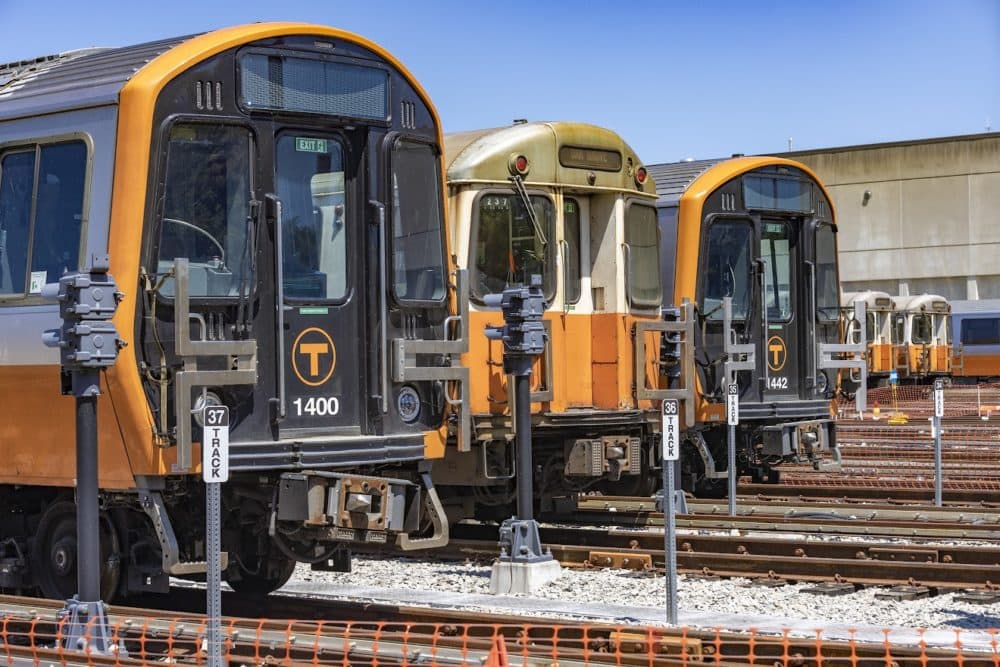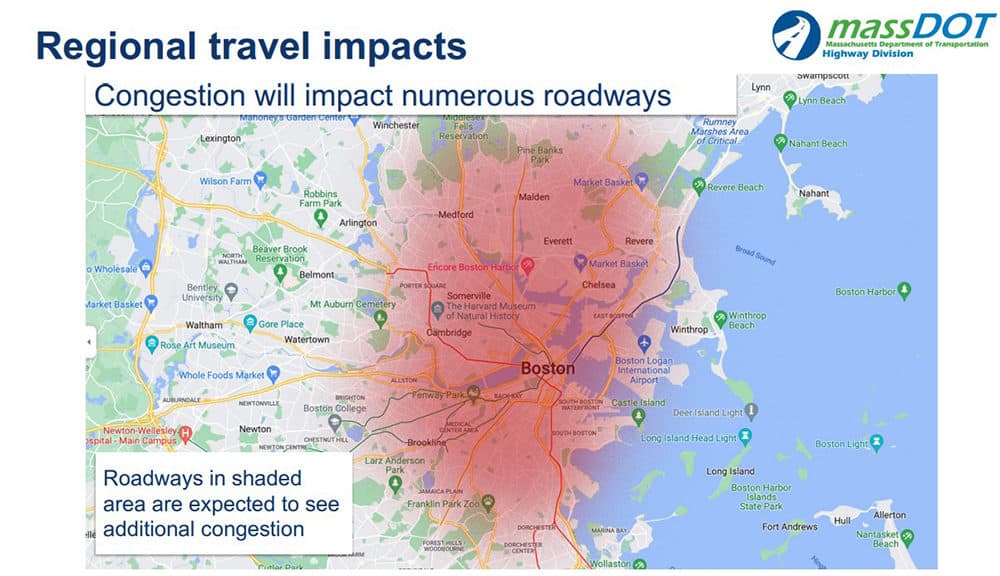Advertisement
Diversions from Orange Line shutdown could cut roadway capacity in half

If you were thinking about hopping in your car to avoid the patchwork of shuttle buses or infrequent commuter rail trains when the Orange Line goes offline Friday night, state officials have a simple message: don't.
Or in fact, maybe just stay away from the corridor stretching from Malden down to Jamaica Plain for a month.
The region will lurch into uncharted territory in four days when the Orange Line shuts down for 30 days. A weeks-long closure of the northern stretch of the Green Line will follow shortly after and will overlap with the Orange Line shutdown.
That will create all sorts of headaches for the riders of the MBTA's second-busiest subway line, which this spring provided more than 100,000 trips on a typical weekday. Baker administration officials made clear Monday the effects will swamp other modes of travel as soon as Monday afternoon, creating "severe" congestion in an area already notorious for its traffic.
"I know that some of the transit users may be considering driving as an alternative to the shuttle buses. I assure you that that is not a good option and you should look to other transit options," Highway Administrator Jonathan Gulliver said. "We are urging travelers to evaluate their commute and, if possible, adjust or look for a route that avoids the shuttle diversion if you must drive in and shift your travel time to off-peak hours."
"If possible," he added, "avoid the region altogether until the diversion period has ended."
MBTA officials announced Friday that they will run free replacement shuttle buses on the Orange Line in two segments, one on the northern end from Oak Grove in Malden to Government Center and the other on the southern end from Forest Hills in Jamaica Plain to Copley. Those routes will both terminate near Green Line stations, where riders will be able to transfer for service through downtown Boston or to get from one shuttle leg to the other.
The T's leadership also wants riders to take advantage of the commuter rail network, which will offer rides free of charge to anyone who flashes a CharlieCard or CharlieTicket in Zones 1, 1A and 2. Seven trains will run every morning from Forest Hills to South Station, and four will run from Oak Grove to North Station, according to MBTA General Manager Steve Poftak.
The MBTA will also staff stations with "ambassadors" who will be able to help direct riders where they need to go.
Advertisement
Other options include a city of Boston effort to offer free 30-day Bluebikes passes during the Orange Line shutdown — an effort that coincides with Mayor Michelle Wu biking to work on several occasions in recent days — and overtures by the Baker administration to employers.
"We're also asking our friends in the business community to show understanding to their employees about some of the transportation challenges their employees are facing and to be flexible about allowing work from home options where feasible," Poftak said.
MBTA officials still do not have an estimated bottom-line total cost for the maintenance work. They said Monday all of the work is already factored into the T's five-year capital plan and has been accelerated or changed slightly to occur in a single 30-day span. The T also expects it will lose somewhere between $3 million and $3.5 million in fare revenue, Poftak said.
MBTA overseers approved a contract with A Yankee Line, Inc. to spend up to $37 million on as many as 200 shuttle buses during the diversions.
"We've been told by some of the supporting teams that we literally have every accessible bus east of the Mississippi in service here running these alternative shuttles," Poftak said.
Weaving that many buses onto already clogged streets poses an enormous challenge, and work is underway particularly in Boston to add bus lanes and turning lanes to allow for smoother travel. Gulliver said the suite of changes will leave roadway capacity in some areas "effectively cut in half."
The state Department of Transportation published a set of charts Monday projecting how much worse traffic will get. One map forecasting roadways that will experience worsened congestion overlays an angry-looking red cloud over most of the metropolitan area, from Malden to Dorchester and from Logan International Airport as far west as Allston.

"The loss of a major transit line is a transportation emergency," Boston Chief of Streets Jascha Franklin-Hodge said. "But we are hopeful that we will look back on this moment as a turning point. Boston needs and deserves safe, reliable, fast transit, and while we expect the shutdown to be painful, it will provide an unprecedented opportunity to perform a large volume of critical work quickly. We are optimistic it will deliver the kind of real and tangible benefits to riders that we so clearly need."
While the region braces for the impacts of the shutdown, the MBTA continues to await the final results of a Federal Transit Administration safety management inspection launched in April, which Poftak previously said provided the "impetus" for the shutdown.
The probe, only the second of its kind ever pursued by the FTA, already resulted in orders for immediate change at the MBTA and warnings about a backlog of delayed maintenance.
Gov. Charlie Baker on Monday rattled off past projects in which the T has suspended service to conduct maintenance and argued that officials at the transit administration he controls knew about the needed repairs before federal investigators arrived.
"There's a friction that exists between how much time we get to spend on the tracks doing work and how much time we spend off the tracks because of the issues around service disruptions," Baker said. "The work that's been identified for this project is on the asset management system of the MBTA. The decision to go a lot faster on it is certainly one that was discussed with the FTA, as it should have been, but I don't think it's fair to say that the MBTA didn't know about this. They did. It's their asset management system. They're the ones that built it."
The governor said he is optimistic that the short-term pain will deliver long-term benefits not just for the Orange Line, but for the region's transportation network as a whole, pointing to the shuttle bus lanes as a worthwhile test run for expanding the idea of bus lanes more broadly.
"We get the fact that the next 30 days are going to be difficult, but (if) the T can truly deliver five years' worth of night and weekend work on the system overall, that's going to be a real benefit, yes, down the road to riders," he said.